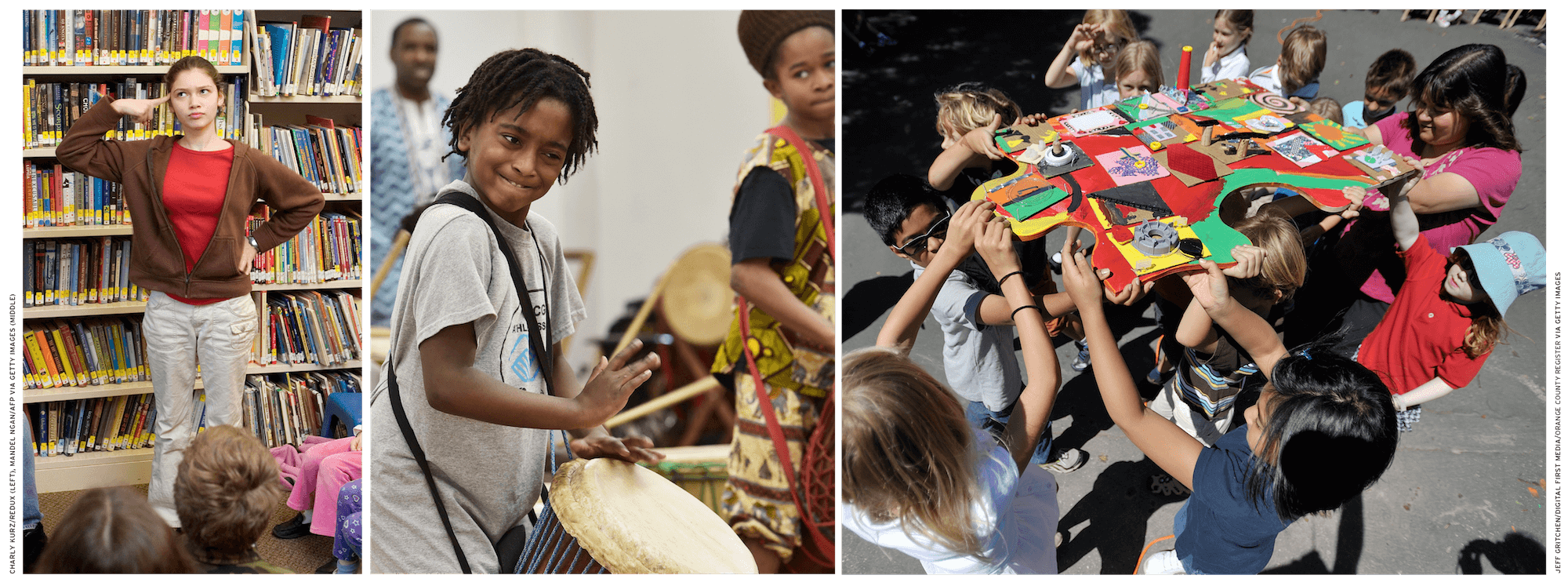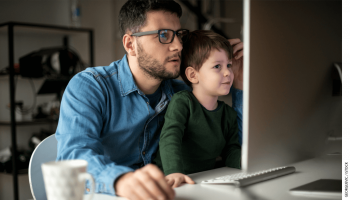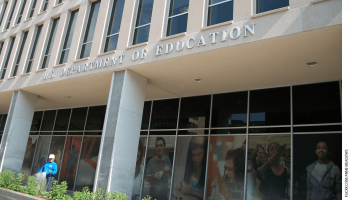
Homeschooled students are isolated and at urgent chance of harm from maltreatment, under-education, and parental abuse. That's the case Harvard School professor Elizabeth Bartholet made in her recent call to ban the practice, that has been legal in all 50 U.S. states for more than a quarter-century. Ironically, Bartholet's article within the Arizona Law Review appeared just as millions of parents were instructed to turn to homeschooling temporarily, under stay-at-home orders that closed schools across the nation.
It can be challenging to know precisely what, when, and just how the country's homeschooled students are learning. In the end, privacy and the freedom to understand more about education as families see fit, with limited government oversight, is a defining feature. But the best evidence we've suggests that homeschooled students are far from isolated.
By looking at a recent national survey of yankee households conducted by the U.S. Department of Education, I discovered that homeschooled students may take part in cultural and family activities than their public-school peers. They seem to invest less time on formal instruction in humanities subjects, but more time visiting libraries and museums and attending community events. If public exposure protects children and cultural knowledge is really a major goal for education, concerns that homeschooled students have been in danger appear, at the very least, overblown.

Homeschooling is both an increasing and changing practice. The number of families reporting they homeschool their kids grew to 1.7 million by 2021, representing 3.3 % of all U.S. students aged 5-17, based on the National Household Education Survey (see Figure 1). On that survey, a nationally representative sample of households also answered a variety of questions about their demographics and amounts of education. Responses were collected from 14,075 families in all, including 552 homeschool families across the Usa.
Overall, homeschool parents may be white or Hispanic and therefore are not as likely to carry college degrees (see Figure 2). Some 55 percent of homeschool families are white compared to 49 percent of public-school families, and 29 percent of homeschool people are Hispanic when compared with 22 percent in public places schools. Homeschool people are also more likely to have 3 or more children than families in public or private schools. Some 32 percent of homeschool households include an adult with a minumum of one college degree, when compared with 36 percent of public-school families and 64 percent of families whose children attend private schools.

The 2021 National Household Education Survey also asked homeschool families questions regarding formal instruction and participation in enrichment activities, pointing to some of the ways where the practice has changed. Thanks to the Internet, homeschool families have more resources and share larger communities compared to decades past. Online clearinghouses, blogs, and social-media groups for families who follow particular educational philosophies are readily available. Casual parent groups pool resources, formal homeschooling cooperatives bring students together for hands-on science experiments and dance classes, and homeschool sports leagues give students the opportunity to play on a team. Around the survey, some 30 percent of homeschool families reported children received some instruction through a homeschool organization or cooperative.
In addition, with ever-expanding access to online content and academic technology, the term \”hybrid homeschooling\” has emerged to explain families who combine home education with part-time attendance in a virtual or brick-and-mortar school. According to the Education Commission of the States, 26 states allow homeschoolers to participate in enrichment activities at a local public school, and states like Vermont and Nevada have allowed homeschoolers to enroll in classes at public schools to augment their studies. And that doesn't include the sorts of virtual learning programs that are presently commonplace during the Covid-19 pandemic: live group enrichment classes like Outschool, online community-college courses, video teaching tools like Khan Academy, and individual tutoring via text and video chats.
One be worried about homeschooling rests around the idea of \”cultural capital,\” the valuable constellation of cultural knowledge, behaviors, tastes, and physical markers of status that help adults navigate their communities and grow their probability of success. When French sociologist Pierre Bourdieu introduced this idea within the late 1970s, he described cultural capital like a having top of the class, arguing that affluent individuals naturally transmit cultural capital one to the other through rituals, practices, and values. Institutions, theoretically, reward those who possess upper-class cultural capital, associating it with individual ability. Empirical research, however, shows that cultural capital is not necessarily limited to the affluent.
In thinking about how you can measure this intangible force, scholars have looked at exposure to various activities that may enable the purchase of cultural capital, for example visiting a skill gallery or museum, experiencing a live artistic performance, and visiting a zoo, aquarium, athletic event, or historical site. In looking specifically at children, scholars also have considered activities like visiting a bookstore or library and shared reading, in addition to parent-child interactions like discussing books, music, or art.
Many traditional school experiences may impart cultural capital, for example participation in music and art classes, involvement in student clubs, and focus of foreign-language and classical literature. Therefore the concern for homeschooled students is they lack use of these experiences at home. Supplies present in art rooms, books obtainable in school libraries, and instruments accessible in music class could be cost-prohibitive for individual families to offer. A sole parent-teacher could struggle to be a multi-subject content expert in these many arenas. The most popular trope from the poorly socialized homeschooled student who knows little about the rest of the world is rooted in these assumptions.
However, what if this isn't the case? The evolving nature of homeschooling could instead offer expanded opportunities for students to gain cultural capital. There will be a growing variety of online education resources and part-time enrollment programs at postsecondary institutions. Homeschool days are common at child-friendly museums, much like references to homeschooling cooperatives. One-to-one instruction could progress more quickly than traditional group classes, freeing up more time for excursions and extracurricular activities (see \”The Educational Value of Field Trips,\” research, Winter 2021). Now you ask ,, how can homeschool families spend their time, and also to what extent are they creating opportunities for college students to obtain cultural capital?
The 2021 National Household Educational Survey offers a rich group of data to examine that question, though it has some limitations. First, the outcomes come from self-reports, and respondents may overestimate their children's participation in cultural and family activities. Given their unconventional decision to educate their children outside of formal education systems, homeschool families might be particularly prone to this social-desirability bias. Alternatively, the absence of regard for convention may make them worry less by what others think.
The activities covered by the survey also may not range from the ways that families could provide different experiences for their children. For instance, many otherwise most homeschool people are from conservative Christian households who report religious and moral instruction as key influences. This background is going to influence the types of cultural excursions they value.
Finally, the data laptop computer provides is relatively basic. For example, reports of formal instruction derive from a yes/no format and don't include the frequency or rigor of activities. Reports of family activities like arts and crafts or playing sports should capture the main activities of homeschooling instead of something above and beyond what students are doing for \”school.\”
Families who reported educating their children at home were asked a variety of questions regarding their homeschooling practices, including which adult primarily leads learning, how many days per week they homeschool, which subjects are taught, and whether their child receives instruction from the cooperative or school. All surveyed families answered questions about cultural and family activities. I compared reported participation in those ideas by homeschool families by families whose children attend private and public schools.
In terms of formal learning, 29 percent of homeschool families reported teaching all four main humanities subjects: art, music, language, and literature. Another 29 percent reported teaching three of these, and 42 percent reported teaching two or less. This means that formal instructional opportunities for cultural-capital acquisition might be lacking for many homeschooled students. Even though only homeschool households report on the teaching of these subjects around the survey, other national data has established that students attending public schools have a tendency to receive instruction in arts, music, literature, and language at higher rates.
Homeschool organizations or cooperatives seem to boost the breadth of happy to which homeschooled children receive exposure. Nearly three-quarters of households whose children receive group instruction report formal study in a minimum of three humanities subjects. In comparison, among families whose children don't participate in homeschool groups, approximately half report formal instruction in 3 to 4 of the humanities subjects.
However, my analysis shows that homeschooled students may participate in activities outside the home that can contribute to cultural capital (see Figure 3). In comparing survey responses for homeschool and public-school families, I find homeschool families are 17 percentage points more likely to visit an art gallery or museum, 22 percentage points more likely to go to a library, and 17 percentage points more likely to attend an event sponsored with a community, religious, or ethnic group. They're also 8 percentage points more prone to visit a zoo or aquarium, and seven percentage points more likely to go to a bookstore. These patterns appear to indicate that homeschooled students may gain exposure to cultural capital through excursions, alongside or perhaps in lieu of formal instruction.

I then investigate probability of homeschooled students participating in family activities which may be related to cultural capital and discover similar results (see Figure 4). When compared with their public-school peers, homeschooled students are 17 percentage points more prone to do crafts and arts and 13 percentage points more prone to focus on projects that entail building, making, or fixing an item with family. Additionally, homeschool households are 9 percentage points more likely more likely to report playing sports or doing physical activities together.
In general, families where a minumum of one parent has a degree report greater participation in many activities, particularly culturally rich excursions like visiting museums and galleries, going to bookstores and libraries, and attending live artistic performances. However, this well-documented association between parents' education level and cultural activities is less evident for homeschool households. Homeschool families are minimal likely to report having a parent or guardian having a degree but they are the most likely to indicate participation in cultural and family activities. Interestingly, less-educated homeschool families report more cultural and family activities than public- or private-school families where a minumum of one parent includes a college degree.
While the concept of homeschooling appears to be having a transformation, the debate and criticisms raised by Bartholet remain dominated by conventional assumptions and timeworn concerns. Worries about deprivation for homeschooled children do not appear substantiated by the survey findings I examine.
Homeschool families report higher rates of participation in cultural and family activities, suggesting that students have possibilities to acquire cultural capital beyond formal instructional time. Indeed, increased opportunities for hands-on learning can be a fundamental reason some families choose to homeschool. Participation during these kinds of activities also may play a compensatory role, possibly offsetting what may be forfeited by not attending a traditional brick-and-mortar school. And it may offer a glimpse of the possibility unique benefits to homeschooling, for example more frequent contact with museums and galleries along with other community-based possibilities to engage with high culture.
This initial foray in to the relationship between cultural capital and homeschooling underscores lines of inquiry for future research. Little is known about how homeschool parents attempt to teach art, music, and other languages. Furthermore, it remains uncertain whether deficiencies in instruction in humanities subjects among homeschool households signifies a rejection of conventional types of instruction or is due to unobserved barriers these families face.
These findings cannot fully answer the concerns raised by Bartholet about child safety and homeschooling. Child neglect and abuse are urgent problems in some share of all families, and it is true that some children find refuge and access social-service supports through their schools. However, national survey data doesn't indicate this is an issue for most. Critiques that homeschooled children develop in cultural and social isolation might be overstated and mischaracterize the practice.
A richer knowledge of homeschooling is especially relevant as families over the United States contemplate an uncertain return to full-time formal instruction in class buildings in the fall of 2021. Taking the activities of homeschool families as a guide, reduced classroom time or continued closures may potentially release additional time for different sorts of educational activities that parents and children can pursue at home. Even when museums and libraries remain closed, they've created rich online tours and academic programs in the wake from the pandemic, like those offered by the Smithsonian Museum of Natural History, the Louvre, NASA's Langley Research Center, and the Metropolitan Museum of Art. Is the knowledge students profit from these kinds of activities equal to the things they develop through experiences at school? What may be the benefits, as well as the limitations, of exploring education in this manner on a broad scale? Within the pandemic age, we might actually cover to find out.




